How to Start a Lawn Mower: 13 Tips & Tricks
-
Ed Malaker
- Last updated:

Many of us spend our entire lives mowing the lawn every few days to keep it looking its best, but that doesn’t mean everyone knows how to start a lawn mower and maintain it properly. If you are new to the lawn-mowing experience and would like a few tips and tricks, you’ve come to the right place. Here’s a step-by-step guide that you can use to become a lawn-mower master in no time.
Starting Your Lawn Mower
1. Push It Into an Open Area
The first thing that you want to do to get your lawnmower started is to push it into an open area on your property. It should be a flat space with plenty of room so you can make any needed adjustments, look it over, and get it started without bumping into surrounding objects.
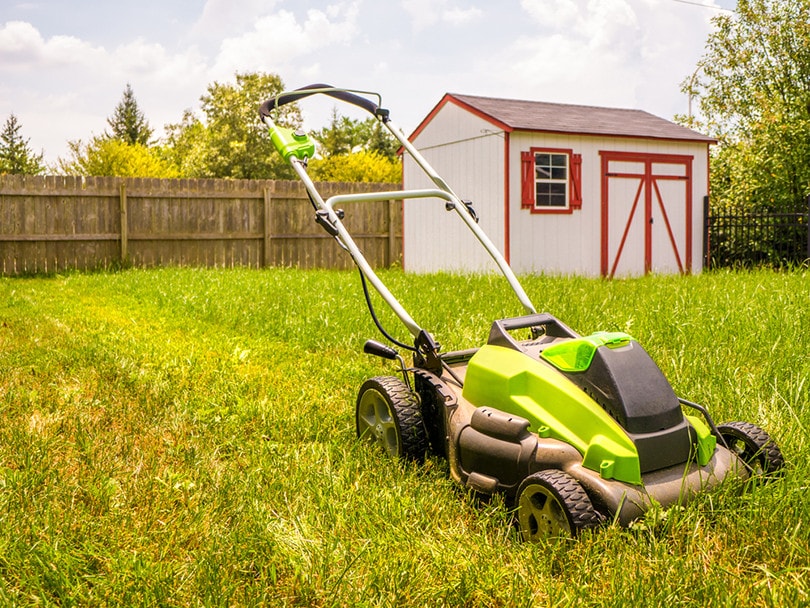
2. Check the Gas and Oil
Next, you want to check the fluid levels in the mower. You should ensure that it is full of gas, so you won’t need to stop once you get started. Trying to start the mower on an empty tank is a common reason that people have difficulty getting it started, so don’t forget to check. If it’s your first time starting it this year, you should also check the oil level to ensure that it’s full, or the engine can get too hot and fail prematurely. You won’t need to check it every time you mow, but you shouldn’t let it go too long, and you should take it to a qualified technician if you notice drops of oil appearing on the ground as you mow.
3. Check the Spark Plug
If it’s your first time using the mower or you don’t use it often, it’s a good idea to ensure that the spark plug is connected. It’s usually on the back of the engine (side closest to you), but it can also be in other areas. It’s easy to identify because it has a thick black wire that almost looks like a tube going right to it. This wire clips onto the spark plug that hangs out of the engine, and you want to ensure that there is a good solid connection, or the engine won’t start. It’s easy for this wire to accidentally get pulled off, especially if you store the mower in a crowded location.
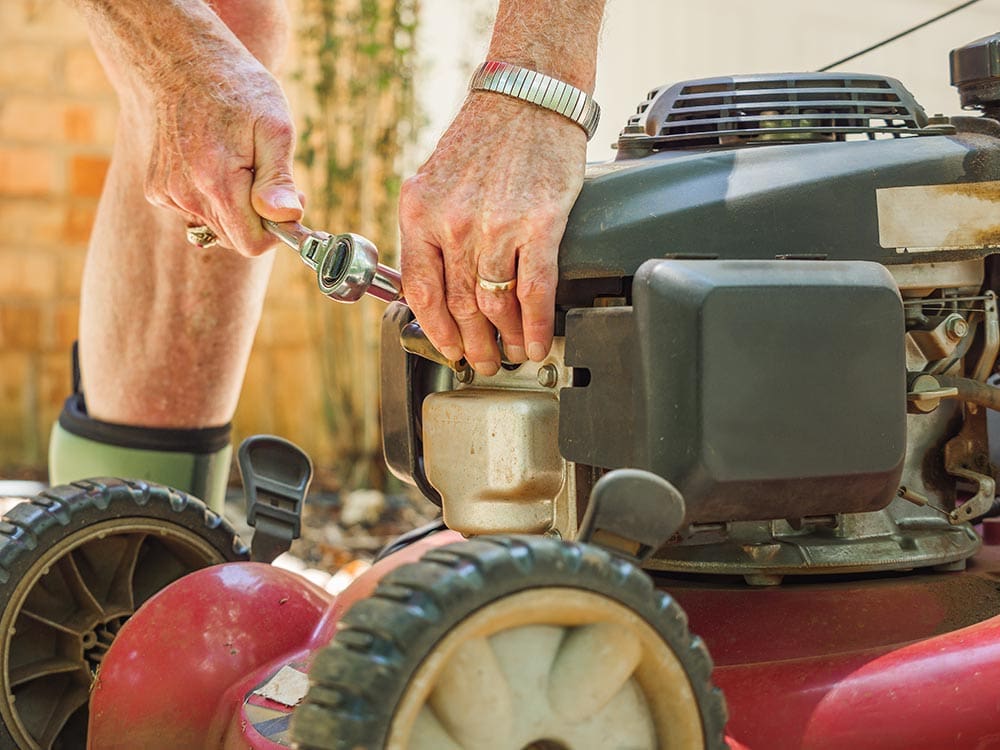
4. Prime the Carburetor
The next step is to prime the carburetor to prepare the engine for starting. To do this, you often must press a clearly marked button several times. The button isn’t electronic. It’s more like a squeeze bottle trigger, and each press squirts a small amount of gasoline into the carburetor. This button often has instructions like, “press four times before starting,” but the actual number can vary, and you might need to pump it several more times to prime the carburetor properly. However, if you start to smell gasoline, you’ve flooded the engine and will need to wait a few minutes before trying to start it again.
5. Open the Throttle
Most lawn mowers have a throttle on the handle that enables you to adjust the speed of the blade, and you will need to set it before you try to start the machine. In many cases, a lower speed will cut just as well as a higher speed and saves you money on fuel, especially if you are consistent. However, most engines don’t maintain a slow speed well when you first start them and often stall. If you notice your mower stalling frequently, open the throttle a little more before trying to start it. After running for a minute, you can decrease the engine speed without worrying about a stall.

6. Adjust the Choke
Some machines have a choke that you can adjust to help you get it started easier, especially in cold weather. If you are having difficulty getting the machine started on a cool morning, closing the choke will help you get a richer gasoline mixture that will often start the engine.
7. Pull the Starter Cable
Most lawn mowers will have a safety bar that you pull up and hold along with the handle. Letting this bar go will instantly cause the engine to shut off, and you will need to hold it to start the engine. While holding this safety bar, give the starter cable a strong pull. Pulling this cable will start the blades turning and should start the motor. You might need to try multiple times and even find yourself pushing the carburetor button again, but you should be able to get it started. Then, to shut it off, let go of the safety bar.
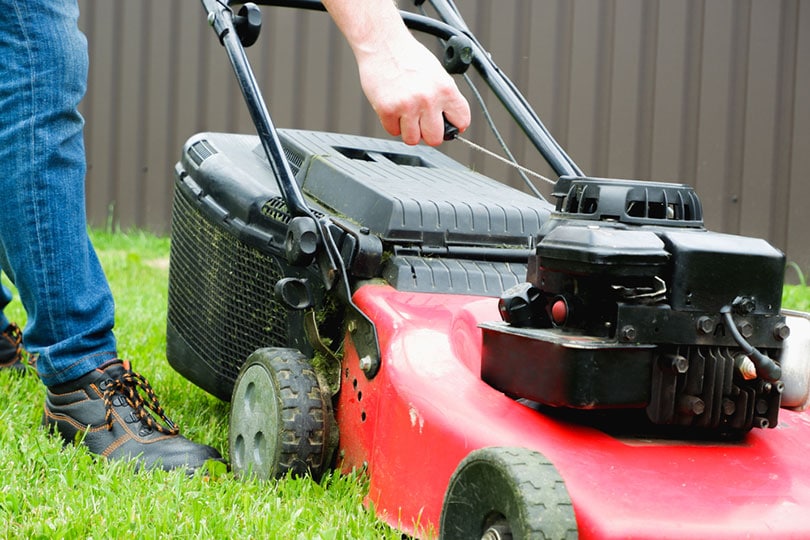
 What If I Have Problems Getting the Mower Started?
What If I Have Problems Getting the Mower Started?
8. Check the Blade
If you checked the fluids and primed the carburetor but find that the starter cable is hard to pull, you can try checking the blade. If the mower didn’t get a good cleaning, some of the dried grass might be preventing the blades from moving. You will need to clean out the dead grass to get it running again. To remove the dried grass, remove the gasoline from the engine, and tip the mower on its side so you can access and clean the underside.
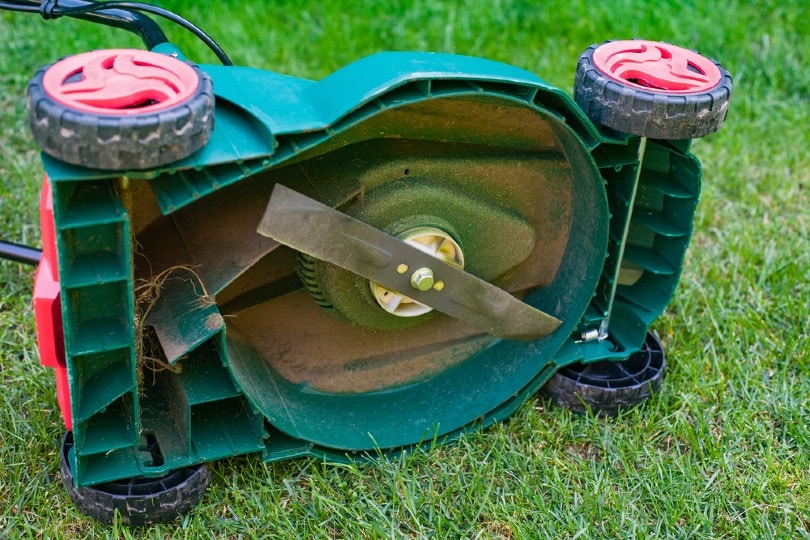
9. Clear the Chute
The chute is where the grass comes out of the machine, and this area can also get clogged. A clogged chute can strain the blades, bogging them down and potentially stalling the engine. You will need to clean out the chute.
10. Empty the Bag
If your lawn mower has a bag to catch the grass clippings, letting it get too full can effectively block the chute, causing problems. We recommend emptying the bag after each use to prevent blocking the chute and to minimize the risk that an animal will make a home inside.
11. Adjust the Height
Blades that are too low can cause your lawnmower to be difficult to start. Many people like to keep short grass, so they don’t need to cut as frequently, but low-hanging blades can hit the ground, stalling the engine and possibly damaging the lawn.

12. Check the Gas
You should always check the fuel level when getting ready to start your lawnmower, but the gas quality is also important. As gasoline ages, it turns a darker color that can approach brown. The darker the gas is, the harder it will be to start your engine, and you might also notice that the engine isn’t running as smoothly as it usually does. Switching old gas for new can help bring your mower to life.
13. Check the Spark Plug
You need to ensure that the wire to the spark plug has a good connection. However, it’s also important to remember that spark plugs do burn out. Manufacturers measure spark-plug lifespan based on miles driven, which isn’t helpful in determining long it will last in a mower. That said, if it’s been a few years and you are having trouble starting it and can’t find the reason, there is a good chance that changing the spark plug will work.
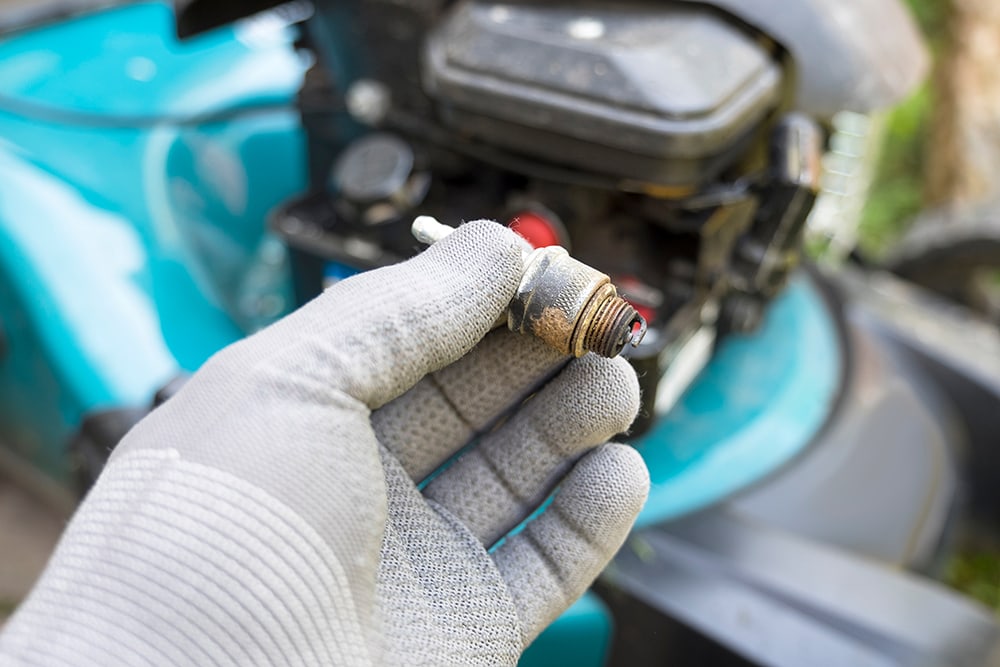
Conclusion
Starting a lawn mower isn’t difficult as long as all the parts work properly, but be careful when pulling the cord so you don’t put too much strain on your back. If you’re having trouble getting it started, push the button a few more times and check the gas level and color before turning it over for a good cleaning. Changing the spark plug might also get it going. Otherwise, you will need to take it to a qualified technician for help.
- You may also like: 13 Fuzzy Cactus Types (With Pictures)
Featured Image Credit: Roman Zaiets, Shutterstock
Contents

 What If I Have Problems Getting the Mower Started?
What If I Have Problems Getting the Mower Started?